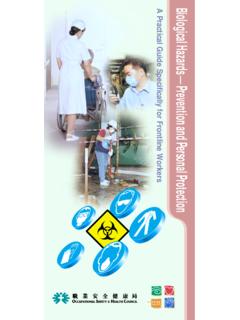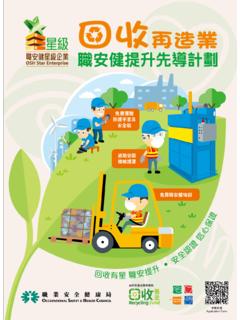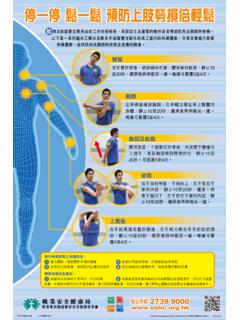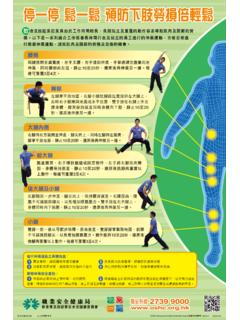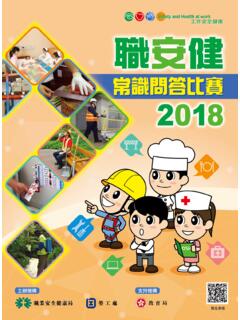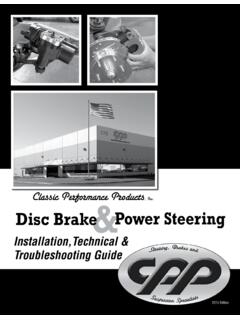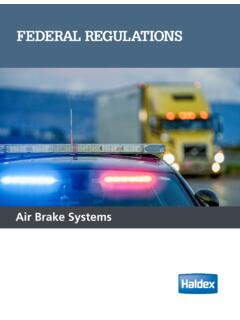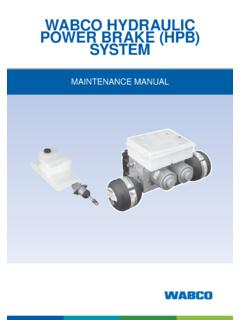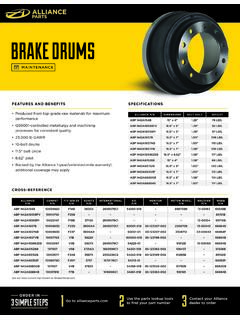Transcription of Contents
1 19 Contents1. Foreword12. Common accidents in lifting operations23. Legislative requirements and code ofpractice of lifting operations24. People35. Mobile Tower Lifting Wire rope Wire rope slings cable Chain Eye Rings, links, Spreader Chain mesh slings and fibre slings156. Load167. Method178. Environment18* This booklet is also available in Chinese version1 The lifting of objects generally occurs on construction sites, in factories and otherindustrial situations. Correct lifting can move large objects efficiently and reduce manualhandling operations. Incorrect lifting however, can lead to disastrous accidents.
2 Everyyear, incorrect lifting procedures cause injuries, loss of work time and property. People,machinery, loads, methods and the work environment, are all important factors forcorrect lifting. Provided that enough safety measures are fully implemented, liftingaccidents can be Foreword1. Foreword2 Code of practice Falling objectsLocal legislative requirements that apply to lifting operations include Factories and Indus-trial Undertakings (Lifting Appliances and Lifting Gear) Regulations enforced by the LabourDepartment, and Shipping and Port Control (Cargo Handling) Regulations enforced by theMarine Labour Department also published the code ofpractice for "Safe Use of Mobile Crane and TowerCrane" in 1998, and provides the trade with guidancefor the safe use of cranes.
3 Collision with obstacles3. Legislative requirements andcode of practice of lifting operations3. Legislative requirements andcode of practice of lifting operations2. Common accidents in lifting operations2. Common accidents in lifting operations Overturning of the crane Breaking theboom sling Touching overheadpower lines3 Personnel related to the lifting operation include "competent examiner", "competent person","crane operator", "slinger", "signaler" and others working nearby. The "competent examiner" is responsible forregular examinations of the lifting appliancesor lifting gears. He shall be: appointed by the employer or the owner ofthe lifting appliances/lifting gears; a registered professional engineer within arelevant discipline; properly trained with relevant practicalexperience.
4 The "competent person" is responsible forregular inspections of lifting appliances orlifting gears. He shall be: appointed by the employer or the owner ofthe lifting appliances/lifting gears; properly trained with relevant practicalexperience. The "crane operator" is responsible foroperating the crane correctly and shall: be at least 18 years of age and hold avalid crane operation certificate; be physically fit; be familiar with hand signals People4. People4 Emergency stopStopReady to moveMove away from thesignalmanMove towards thesignalmanMove slowly byindicating distanceMove towards the handstretched directionMove towards the handstretched directionSwing towards the handstretched directionSwing towards the handstretched directionRaise the boomRaise the boom slowlyLower the boomLower the boom slowlyRaise the boom andlower the loadLower the boomand raise the loadExtent the boomRetract the boomUse the main hoistUse whip lineLower the hoistLower the hoist slowlyRaise the hoistRaise the hoist slowlyStop every thing The "slinger" is responsible for attaching and detaching the load to
5 And from the shall: have received appropriate training on general safe lifting operations; be capable of selectings lifting gears suitable for the loads; liaise with the operator and direct the movement of the crane safely. The "signaller" is responsible for relaying the signal from the slinger to the crane shall: have received appropriate training on general safe lifting operations; be able to direct the movement of the crane and hand signalsNote: During the lifting operation, either the slinger or signaller shall communicate withthe operator. Other communication methods ( , wireless walkie-talkies,telephones, etc.) may also be refers to lifting appliances and all lifting lifting appliance includes a crab, winch, teagle, pulley block, gin wheel, crane, shearleg,excavator, pile driver, pile extractor, dragline, aerial rope way, aerial cableway transporteror overhead runway, lifting gears includes a chain sling, rope sling, ring or similar gear, link, hook, plateclamp, shackle, swivel or Machinery5.
6 Machinery6 Selection of cranesFor the correct selection of cranes, the following factors shall beconsidered: Weights and dimensions of loads Height of lift and distances/areas ofmovement of loads Number and frequency of lifts Period of time for thelifting operation Ground conditions Other factorsTesting, examination and inspectionAll testing and examination of cranes must be carriedout by competent examiners and the regular inspectionscompleted by competent personnel. All testing,examination and inspection reports and certificates shallbe properly Working LoadsThe Safe Working Load (SWL) for operating the crane shall be specified according to theresults of test and examination certificates, and such loads must not be exceeded duringthe lifting and maintenanceAll cranes shall have regular maintenance, to ensure they always kept in good Cranes7a.
7 Level groundCorrect operation Uphill positionThe load moves toward the crane and reduces the operation radius that may cause the crane to tip over Downhill positionThe load moves away from the crane and this may overloads the crane and cause the crane to tip over radiusAvoid working on a slopeDecrease inoperation radiusIncrease inoperation Mobile craneOperation points: The mobile crane shall only beoperated on a firm, levelground that adequatelysupports the weight of thecrane and loads. Before lifting, fully extendoutriggers and ensure theirstability on the ground. The weight of the load shall notexceed the Safe WorkingLoad.
8 Never abruptly swing or stopthe crane. Loads shall not be dragged onthe ground. Move the load at a safe speed- use low speeds withinseveral metres of the load'sdestination. Adjust the boom length toensure the crane is operatingwithin the extent of the safeoperation radius. When moving uphill ordownhill, the boom angle shallbe adjusted to the safeworking Tower craneOperation points: Ensure that the automatic safeload indicator is installed. Provide safe means of accessand egress. Ensure that the lifting routes do not collide withany object. Lifting routes shall not come across any buildingor pass over any person. Travel speed shall be as slow as possible, to ensurethe load's stability.
9 Be aware of the height of lifting, the length of thecrane's trolley and refer to the load chart. When the tower crane is not in operation, the crane'strolley must be positioned near the tower at minimumradius, with the hook raised to its highest position. During typhoons, the jib shall be set to thetyphoon's leeward side with the brake releasedallowing the jib to swing rope slingWireStrandCoreThimbleBroken wiresSurface wires are wornby 1/3 or moreChange of diameter of wire rope slingBird cagesKinksNormalAbnormalNormal diameterReduced diameterLifting gears play an important part in the lifting operation. Their function is to tie theobjects tightly and hang them on the crane.
10 There is a great variety of lifting gears. If thereis insufficient knowledge or a wrong choice is made, lifting may fail and accidents mayresult. All lifting gears shall be tested by qualified examiners and suitably marked with aSafe Working Load (SWL). Wire rope consists of individual wires laid into anumber of strands, which are then wrapped arounda central core. Different number of wires in the strands and variousmethods of arrangement may affect thecharacteristics of the wire rope sling. The wire ropeshall be equipped with a thimble and with pressedmetal sleeve and marked with a Safe Working Load(SWL). Wire rope slingsPoints for attention: Use only suitable wire rope slings.

